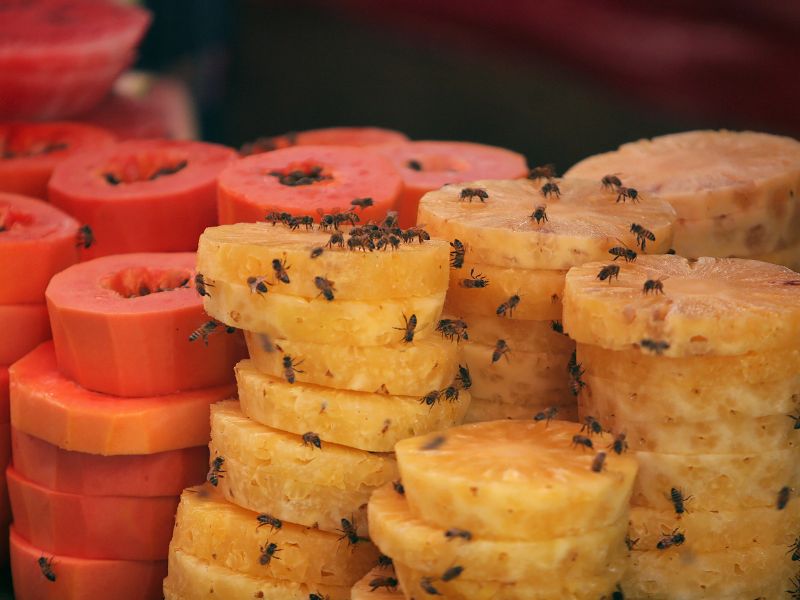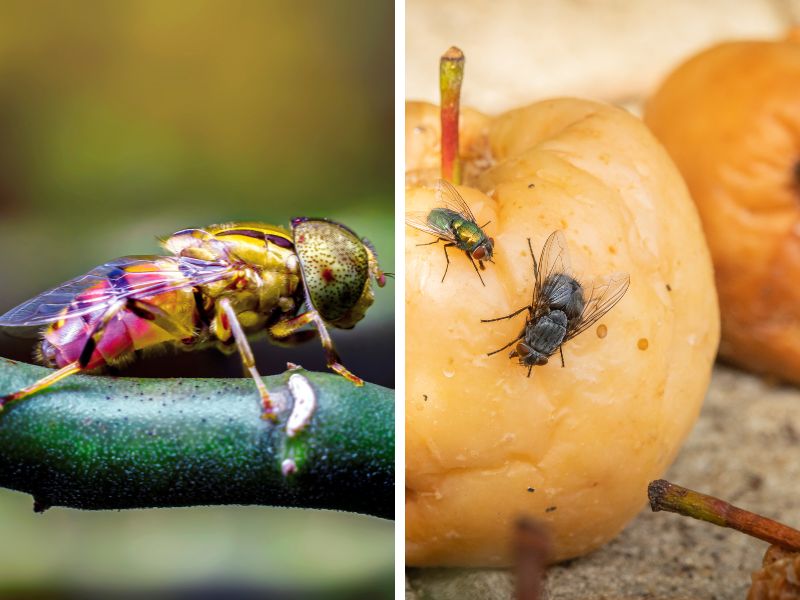As summer’s warm, balmy days arrive, so do some unwelcome guests in our homes and gardens – fruit flies. These tiny, flying pests can quickly become a nuisance, buzzing around our fruits, vegetables, and trash bins. Understanding where these pests come from and how to get rid of them is essential to enjoy a fly-free summer.

Canva. com
Origins Of Fruit Flies
Fruit flies, scientifically known as Drosophila melanogaster, are tiny insects measuring about 1/8 inch in length. Despite their small size, they can reproduce rapidly and infest your surroundings in no time. The primary sources of fruit flies are overripe or decaying fruits, vegetables, and fermented liquids. These pests are particularly attracted to the sweet aroma of ripening produce, making kitchens and dining areas their favorite spots.

Canva. com
Getting Rid Of Fruit Flies
Thankfully, there are several effective ways to rid your home of fruit flies:
- Remove Attractants: Keep ripe fruits and vegetables in refrigerators or sealed containers to minimize attractive scents. Dispose of overripe or decaying produce promptly.
- Cleanliness is Key: Regularly clean countertops, sinks, and trash bins to remove any food debris or spills that might attract fruit flies.
- Seal Trash Properly: Make sure your trash bins have tightly fitting lids and take out the Trash regularly, mainly if it contains food scraps.
- Vinegar Traps: Create simple vinegar traps by placing a small amount of apple cider vinegar in a container with a few drops of dish soap. Cover the container with plastic wrap and poke small holes in it. Fruit flies will be lured in by the vinegar and get trapped inside.
- Fruit Fly Repellents: Consider using natural repellents like essential oils, such as basil, lavender, or lemongrass, to deter fruit flies from entering your home.
- Flyswatters and Traps: If the infestation is severe, use flyswatters or store-bought fruit fly traps to capture the pests physically.
